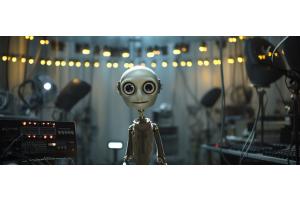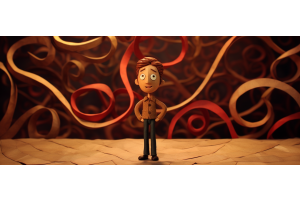Getting Started in Stop Motion

Unleash Your Creativity Frame by Frame
Stop motion animation is a captivating and timeless form of filmmaking that has captivated audiences for generations. From classic films like Wallace and Gromit’s "A Grand Day Out" to modern favourites like "Kubo and the Two Strings," stop motion animation has a unique charm that sets it apart from other animation techniques. If you've ever been intrigued by the idea of bringing inanimate objects to life through movement and storytelling, then diving into the world of stop motion animation might be the perfect creative outlet for you. On this page, we'll provide you with essential steps and tips to get started in the fascinating art of stop motion animation.
Before you embark on your stop motion animation journey, ensure you have the necessary tools at hand. While professional setups can be elaborate, beginners can start with simple and affordable equipment. Basic requirements include a digital camera or a smartphone with a stable tripod, stop motion animation software, and a computer for editing.
Like any film project, stop motion animation requires a solid plan. Begin by crafting your story and defining your characters. Whether it's a short narrative or a fun experiment, having a clear concept will guide your animation process. Create a storyboard or a shot list to map out the sequence of events and visualize the action frame by frame.
One of the joys of stop motion animation lies in the diverse range of materials you can use to bring your characters and sets to life. From clay and plasticine to paper cutouts and from everyday objects to puppets with armatures, the possibilities are endless. Experiment with different materials and textures to find the ones that suit your vision best.
Find a well-lit, quiet space to set up your animation studio. Adequate lighting is crucial to ensure consistent results and avoid unwanted shadows. Consider investing in adjustable lights. Using a natural light source is possible but will most likely result in a flickering image. Creating a stable and undisturbed workspace will help maintain continuity throughout your animation. We offer animation stages which are designed specifically for this task.
Stop motion animation involves taking a series of still photographs and playing them in quick succession to create the illusion of movement. It's essential to master the technique of capturing smooth and consistent frames. Keep your camera stable and use a remote trigger or a timer to avoid any unintentional camera movement. Consider investing in software to aid your animation.
Stop motion animation is a labour of love that demands patience and persistence. It can be time-consuming, but the end result is immensely rewarding. Embrace the process and learn from each attempt, tweaking your methods and enhancing your skills along the way.
Once you have all your frames captured, it's time to bring your animation to life in post-production. Stop motion animation software can be used to fine-tune the sequence, adjusting timing and adding any necessary effects or transitions. Additionally, consider using other software packages to add sound effects or music and additional transitions to enhance the overall experience.
Getting started in stop motion animation is an exciting and fulfilling journey into the world of creativity and storytelling. With the right tools, careful planning, and dedication, you can bring your characters and ideas to life frame by frame. Remember that practice makes perfect, so don't be discouraged by initial challenges. Embrace the learning process and enjoy the magic of animating inanimate objects. So, grab your camera, roll up your sleeves, and embark on your stop motion adventure today!





